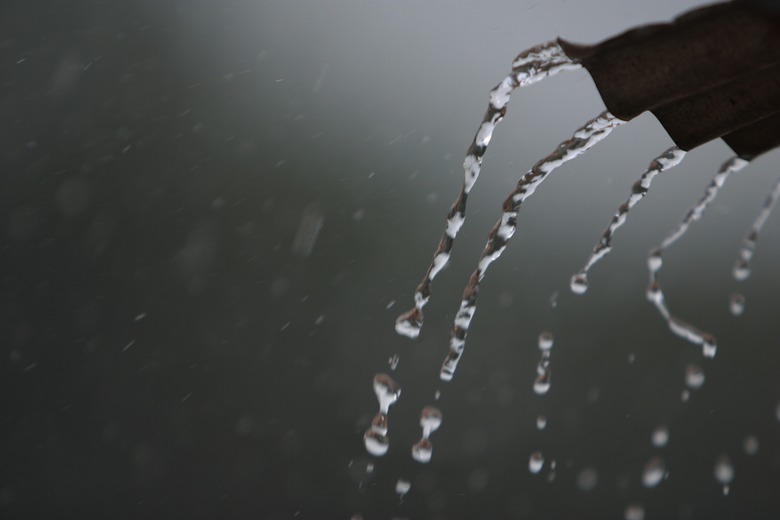Rainwater-Harvesting Projects For Kids
Rainwater-harvesting is becoming increasingly important as natural water sources come under increasing strain. Many of the things for which we use water, such as watering the garden and washing the car, can be done safely with harvested rainwater, yet we continue to use purified tap water. This waste puts extra strain on our aquifers, resulting in shortages, ecological problems and higher costs to consumers.
Calculating Need
Calculating Need
Have kids work out how much water is used per day for things that do not require clean drinking water. Have them measure the volume of water stored in the toilet cistern and multiply this by how many times it is flushed per day. Additionally, have them find out the amount of water used by the hose in one minute. They can use this measurement to determine how much water is used when watering the garden or washing the car. This will allow them to calculate how much water the average household needs to collect.
Drainpipe Water Barrel
Drainpipe Water Barrel
The quickest way to start collecting rainwater is simply to position a water barrel or tank at the foot of an existing gutter. Have the kids measure the amount of water it collects over a number of weeks and determine an average amount. This will tell them if the volume that could be harvested and used is equivalent to the amount that is required for use in the house.
Storage Projects
Storage Projects
One of the problems with water supply is that demand for water is generally at its highest in the summer when rainfall is at its lowest. To deal with this disparity, water must be collected in the winter for use in the summer. Extend the investigation in the previous sections by having the kids collect data over a whole year. Have them calculate how much water is stored and how much is used each week. Start the year assuming the tank is half-full. Get them to determine how much water is in the tank at the end of each week after water has been added and deducted. Use the total left in the tank at the end of the week to make the calculation for the following week. Calculate if the tank can store enough water in the winter to cope with summer demand. Finally, have them calculate the minimum tank size that would be required to store enough water to meet demand throughout the entire year.
World Exchange
World Exchange
Many developing countries already operate educational programs on rainwater-harvesting to help children understand the need and provide them with the technical knowledge. Have the children set up a rainwater-harvesting project in the school in conjunction with the school maintenance staff. Find a school that is already operating this kind of project in the developing countries, and have the children write to the school to exchange ideas about needs and techniques for rainwater harvesting. It is a good idea to contact the school in advance and to send prepaid envelopes and paper.
Cite This Article
MLA
Milner, Will. "Rainwater-Harvesting Projects For Kids" sciencing.com, https://www.sciencing.com/rainwaterharvesting-projects-kids-10033978/. 24 April 2017.
APA
Milner, Will. (2017, April 24). Rainwater-Harvesting Projects For Kids. sciencing.com. Retrieved from https://www.sciencing.com/rainwaterharvesting-projects-kids-10033978/
Chicago
Milner, Will. Rainwater-Harvesting Projects For Kids last modified March 24, 2022. https://www.sciencing.com/rainwaterharvesting-projects-kids-10033978/
